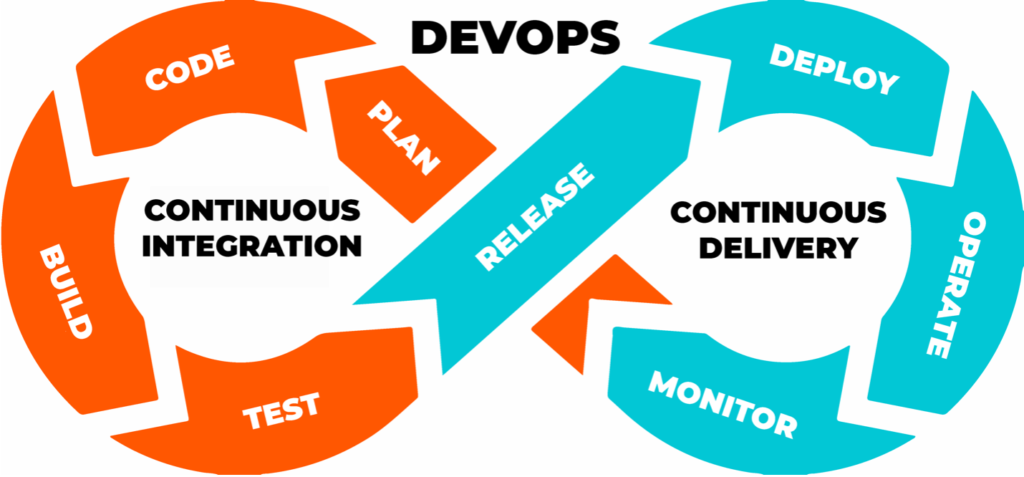Here’s the Difference Between CI/CD and DevOps—and How They Work Together to Drive Innovation
DevOps and continuous integration/continuous delivery (CI/CD) are fundamental for businesses looking to drive more innovation and produce transformational results. These processes empower developers to build quality software and applications on an ongoing basis through automated development, testing, delivery and deployment, which ensures better collaboration and greater efficiency.
Beyond the critical role they play, these processes have another thing in common: People have a lot of questions about them—and often confuse CI/CD and DevOps, how they’re different and how they work together. One quick Google search on “CI/CD vs. DevOps” yields dozens of threads on Quora, Stack Overflow, Reddit and more—all asking for a clear answer on the relationship, similarities and differences.
Let’s take a closer look at these concepts and how each contributes to a business’s goals of continuous innovation.
What is DevOps?
DevOps, short for development and operations, is a collaborative methodology meant to break down the barrier between development and operations teams in an organization. When businesses adopt DevOps tools and best practices, they gain a more streamlined, agile approach to software development by allowing their teams to automate processes and implement new changes and features more efficiently, speeding up the delivery process.
An example of DevOps would be quickly and efficiently deploying code on a cloud platform. It’s an ongoing process—rather than having one large update every few months or years, smaller, incremental updates are pushed out on a continuous basis. This ultimately allows developers to build, test and deploy changes or releases without affecting the reliability of the infrastructure.

The Difference Between Continuous Integration and Continuous Delivery
Overall, DevOps was created to remove a lot of the headaches that can come with innovation. It’s meant to encourage developers to continually make small improvements and not be afraid to change the environment—which brings us to continuous integration and delivery.
Continuous integration (CI) and continuous delivery (CD) are subsets within the larger DevOps umbrella—put simply, these are the two core processes that enable the DevOps methodology. As two sides of the same coin, they work together to remove the complexity of ongoing innovation. Let’s break down the two.

Continuous integration (CI) is a development process of automatically building and performing unit tests upon making changes to the source code. CI requires development teams to integrate code changes into a shared source code repository multiple times every day.
The main goal of continuous integration is to create a consistent, ongoing method to automatically build and test applications—ensuring a change from one developer is suitable for use in the entire code base. Through continuous integration, developers can solve problems they face when writing, integrating, testing and delivering software applications to end-users.
Continuous delivery (CD) is an extension of continuous integration. It’s a process in which DevOps teams develop and deliver complete portions of software to a repository—such as GitHub or a container registry—in short, controlled cycles. Continuous delivery makes releases regular and predictable events for DevOps staff, and seamless for end-users.
Another goal of continuous delivery is to always keep code in a deployable state so that updates can go live at a moment’s notice with little or no issues. Programmers are working in a one-to-two-week sprint, rather than a months-long development of an update. So, updates can come to programs every few weeks, rather than one large annual release cycle. Using automated software, the code will deploy to all servers, pause them, push the code out, make sure it landed correctly, then turn them back on—all in a seamless way for users.
CI can be viewed as a first step and CD as the second for creating and deploying code. CI is more about getting the code ready to be released (build/test), while CD is the actual release of the code (release/deploy).
Leveraging CI/CD and DevOps to Drive More Innovation
Now you know the differences (and similarities) between DevOps and CI/CD and how they work together to help businesses achieve transformation goals—but do you know how to apply them across your own team?
Navisite’s Cloud DevOps Service includes support for CI/CD pipeline development—ensuring your organization can take advantage of these quick and efficient innovation processes without the risk. Check out a few of our case studies for real-world examples of our Cloud DevOps Service in action:
- How Advanced Cyber Security Meets Demand for its Security Service with Navisite’s Cloud DevOps Service: Learn how Navisite modernized and automated DevOps processes to enable fast deployment of code on AWS.
- MediaZilla Builds a Continuous Integration and Delivery Pipeline with the Help of Navisite: Learn how Navisite helped MediaZilla build a continuous integration and continuous delivery (CI/CD) pipeline to drive efficiency and innovation.
To learn more about Navisite’s Cloud DevOps Service and how we can help you build a CI/CD pipeline to support your goals with continuous innovation, check out our on-demand webinar: DevOps Automation on AWS: How to Free Your Teams and Deploy Faster.